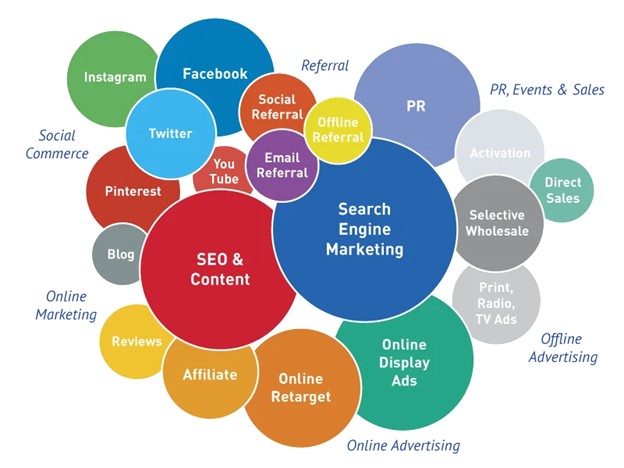At its core, account-based marketing (ABM) is an approach that sees businesses build and execute hyper-personalized marketing programs that are aimed precisely at defined accounts. In other words, it’s a way to treat each client uniquely. ABM allows you to market to clients in a more personal and organic way.
But at the same time, simply saying that you’re going to be building an account-based marketing strategy is one thing. Actually doing so properly is something else entirely. Sometimes, a marketing team will begin building an ABM strategy without consulting their colleagues on the sales team. This can lead to a dramatic misalignment between theory and reality, and make it harder to reach clients.
To avoid missing the mark with your own ABM strategy, it’s critically important that both departments work together. Teamwork is needed to unify the messaging being created and the steps needed to implement those strategies. Marketing teams need to reach out to sales to learn more about their goals and current strategies. Cross-team collaboration will make sure there is no duplication of effort or misunderstanding of priorities.
Thankfully, getting to this point isn’t necessarily difficult. It will, however, require both you and your marketing and sales team members to keep several important things in mind.
Marketing and Sales: Together as One
To get a much better idea of why great account-based marketing needs the marketing and sales teams together, consider account-based prospecting.
Account-based prospecting is the process of using sales insights to prospect the right accounts and targets in the first place. This process allows you to “hit the ground running” by focusing your attention in the right areas. The most immediate benefit is that it helps to eliminate waste. In a long-term capacity, it also helps make sure that you pay attention to accounts generating the most revenue. This helps maximize your return on investment as quickly as possible.

Consider this: account-based marketing is about customizing your marketing to play to the strengths of a key account. To get to that point, you need to know as much about them as possible. You need to understand their needs, their wants, what they like, and what they dislike. Only then will you be able to present your business’ solution as THE solution they’ve been looking for.
By using sales insights to prospect, you’re quickly identifying those accounts where this type of messaging is most effective. So not only are you offering a more personalized marketing approach, but you’re extracting the maximum amount of value out of those accounts.Another benefit of bringing the marketing and sales teams together is seeing how each defines growth potential and verticals. By understanding each team’s unique approach, you can help make sure that you’re avoiding duplicating efforts, and increase productivity. Maintaining visibility in this area also helps you understand how the efforts of each department can be unified to increase effectiveness.
A Much-Needed Alignment With an Eye Towards Relationships
Sales and marketing alignment pays off in other ways, too. For one, it benefits the customer because you’re now able to engage them in more relevant ways during the sales cycle. Secondly, when sales and marketing departments share key information about clients, it also benefits people on both teams.
Marketing employees are in a position where customizing their campaigns is now easier. They have a wealth of data to draw from that may have otherwise been inaccessible to them. Sales teams benefit as well in that they now have information that can be used to create more efficient solutions. Marketing can help sales craft the messaging that customers want to hear, how they want to hear it.
The biggest reason why great account-based marketing efforts must bring the marketing and sales teams together is a concept called total addressable marketing (TAM). TAM customizes your brand’s products, services, messaging, and more. TAM’s goal is to meet the customer’s specific needs at every point in the purchasing cycle.

Account-based marketing works shortens the sales process thanks to how it brings marketing team members directly into the sales funnel. It makes it far easier to identify those high-value leads that command your attention. When paired with a personalized marketing experience, it makes it easier for the sales team to convert those leads into paying customers. So instead of focusing on quantity, you’re instead targeting quality – which is exactly the way it should be.
In the end, it’s important to understand that marketing success is about getting the right message in front of the right person at the right time. Therefore, this type of targeted marketing is how you do it. Not only does account-based marketing allow you to create customized, personalized campaigns that resonate better than ever, but it does so via a technique that also promotes collaboration between the marketing and sales teams at all parts of the customer lifecycle.
It also brings with it the most important benefit of all: a strategy that improves your relationships with customers, thus increasing revenue along the way. Facilitating collaboration between marketing and sales will help make your ABM strategy function and deliver results.







